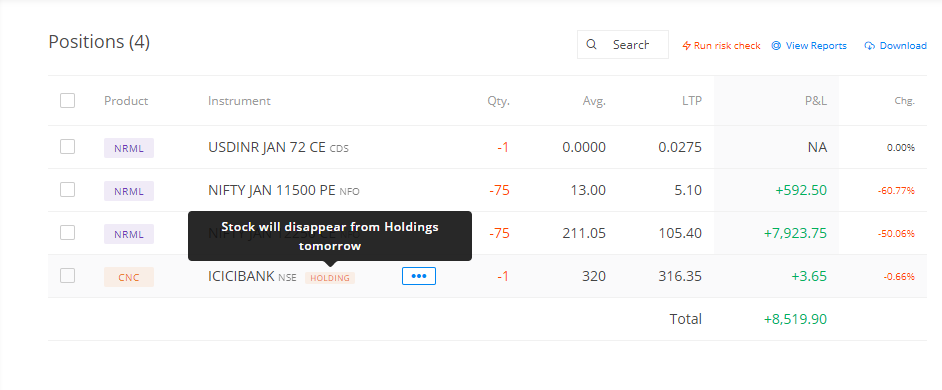Sold stocks are debited from the demat account on T+1 day. These stocks can be repurchased before the market closes on the same day, and such trades are known as intraday trades, which are popular among active traders. Displaying the stocks sold in the positions window during the trading day benefits traders who intend to buy them back. The quantity of the stock appears as negative in the positions window and decreases from the holdings page, indicating that these stocks have been sold.
This stock sold position is greyed out and has a tag called
HOLDING
on Kite. Stocks are debited from the demat account by the end of the day if they are not bought back.

Why is the P&L change of the stocks sold shown on Kite?
Active traders who decide to buy back the sold stocks do it based on the P&L of the position from the selling price. As a trader, the strategy may be to earn by selling the shares at some point in the day and buying it back at a lower price.
Example scenario
- As displayed in the image above, 1 share of ICICI Bank is sold at ₹320.
- If the price goes down to ₹316.35, the profit will be ₹3.65 (1% of the holding value) if the shares are bought back. The holdings remain intact.
-
Traders can make a loss if the market goes against them from the time they sell the shares. The live P&L is shown for stocks sold as well to help traders track their position and decide if the stock needs to be bought back.






